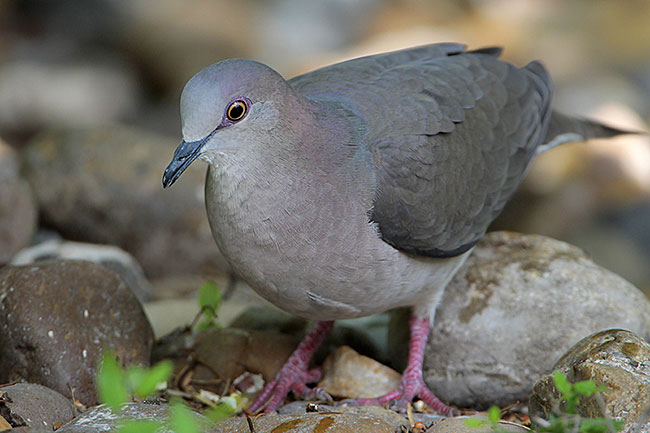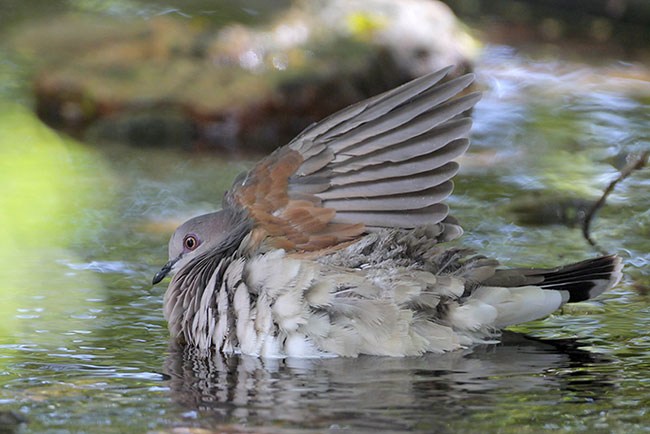The tropical and sub-tropical White-tipped Dove reaches the northern extent of its range in Texas. In more southerly areas, White-tipped Doves breed all year, but in Texas they breed in spring and summer as most other bird species do.
White-tipped Doves seldom fly, instead spending most of their time on the ground. They also rarely gather in flocks, and are usually seen singly or in pairs. In fact, they are rather aggressive toward other White-tipped Doves, and frequently chase them away.
Photograph © Greg Lavaty
Description of the White-tipped Dove
BREEDING MALE

Photograph © Greg Lavaty
The White-tipped Dove is large and chunky, with brown upperparts, a whitish forehead and face, reddish legs, and small, white outer tips to the tail feathers that are visible in flight.
Female

Photograph © Greg Lavaty
Sexes similar.
Seasonal change in appearance
None.
Juvenile
Similar to adults.
Habitat
Woodlands and riparian areas.
Diet
Seeds and berries.
Behavior
Forages on the ground or in low trees.
Range
Resident in south Texas and Mexico as well as Central and South America.
Fun Facts
Parents swallow the droppings of their young, making their nests much cleaner than the nests of other doves.
White-tipped Doves can breed nearly year-round.
Vocalizations
The call resembles the sound of blowing across the top of a glass bottle.
Similar Species
- White-winged Doves have large white wing patches, and Mourning Doves have pointed tails with extensively white outer edges.
See more: Types of doves in the U.S.
Nesting
The nest is a platform of sticks placed in a tree.
Number: 2.
Color: Buff.
Incubation and fledging:
– Young hatch at 14 days.
– Young fledge (leave the nest) in 12-15 days after hatching but remain with the adults for some time.


